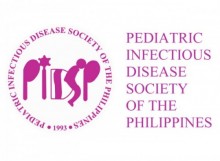Journal 2018 Vol.19 No.2
Profile and Treatment Outcome of Patients with Infective Endocarditis Admitted in a Pediatric Medical Center From 2005-2016
Maribel D. Pasaoa , M.D.
Abstract
Background: Infective Endocarditis (IE) is an infection of the endocardial surface of the heart. It remains a life threatening infection among extremes of ages and erroneous or late diagnosis may lead to serious consequences.
Objective: To determine the clinical profile and treatment outcomes of pediatric patients with IE admitted in a pediatric medical center.
Methods: This is a retrospective descriptive study on pediatric patients (0-18 years old) diagnosed with IE from January 2005 to June 2016. Patients’ medical records that satisfied the criteria for IE based on Modified Duke Criteria were included in the study.
Results: A total of 37 charts were reviewed with male to female ratio of 1:1. Most common chief complaint and physical finding were difficulty of breathing and tachycardia,respectively.Cardiac murmur was appreciated upon diagnosis except in one patient. 70% had ventricular septal defect and 24% had rheumatic heart disease. Most common associated non-cardiac condition was the presence of dental caries, while only 11% had history of previous cardiac surgeries. 2-Dimensional Echocardiography (2D-Echo) showed vegetation in 97.2% and 49% had positive growth in blood culture. Most common isolate was Streptococci. Empiric therapy included penicillin G (84%) with gentamicin (76%). Complications noted were brain infarct,pericarditis and pulmonary embolism. Majority were managed medically, 7 patients (19%) had vegetectomy and 9(24%)died during hospitalization.
Conclusion: IE is a common complication of congenital heart disease.High index of suspicion is warranted for the early management and prevention of morbidity and mortality.
Keywords: infective endocarditis, congenital heart disease, Streptococci
https://doi.org/10.56964/pidspj20181902003
| View Full Article in PDF format |
Journal 2018 Vol.19 No.2 Original Articles 1pidsp@uplink.com.ph2022-12-10T08:58:52+00:00
